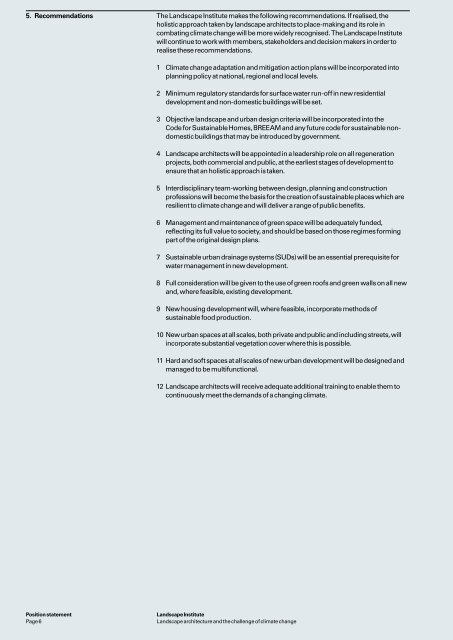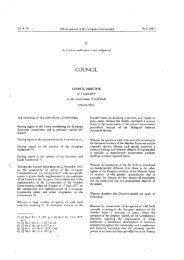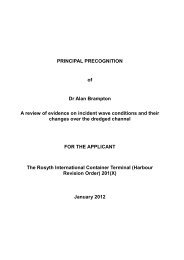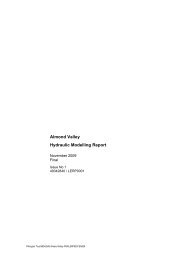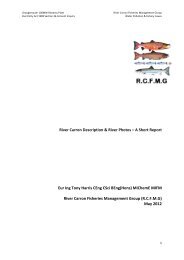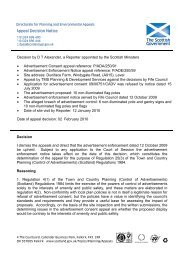Landscape architecture - Directorate for Planning and ...
Landscape architecture - Directorate for Planning and ...
Landscape architecture - Directorate for Planning and ...
You also want an ePaper? Increase the reach of your titles
YUMPU automatically turns print PDFs into web optimized ePapers that Google loves.
5. Recommendations The <strong>L<strong>and</strong>scape</strong> Institute makes the following recommendations. If realised, the<br />
holistic approach taken by l<strong>and</strong>scape architects to place-making <strong>and</strong> its role in<br />
combating climate change will be more widely recognised. The <strong>L<strong>and</strong>scape</strong> Institute<br />
will continue to work with members, stakeholders <strong>and</strong> decision makers in order to<br />
realise these recommendations.<br />
Position statement<br />
Page 6<br />
1 Climate change adaptation <strong>and</strong> mitigation action plans will be incorporated into<br />
planning policy at national, regional <strong>and</strong> local levels.<br />
2 Minimum regulatory st<strong>and</strong>ards <strong>for</strong> surface water run-off in new residential<br />
development <strong>and</strong> non-domestic buildings will be set.<br />
3 Objective l<strong>and</strong>scape <strong>and</strong> urban design criteria will be incorporated into the<br />
Code <strong>for</strong> Sustainable Homes, BREEAM <strong>and</strong> any future code <strong>for</strong> sustainable nondomestic<br />
buildings that may be introduced by government.<br />
4 <strong>L<strong>and</strong>scape</strong> architects will be appointed in a leadership role on all regeneration<br />
projects, both commercial <strong>and</strong> public, at the earliest stages of development to<br />
ensure that an holistic approach is taken.<br />
5 Interdisciplinary team-working between design, planning <strong>and</strong> construction<br />
professions will become the basis <strong>for</strong> the creation of sustainable places which are<br />
resilient to climate change <strong>and</strong> will deliver a range of public benefits.<br />
6 Management <strong>and</strong> maintenance of green space will be adequately funded,<br />
reflecting its full value to society, <strong>and</strong> should be based on those regimes <strong>for</strong>ming<br />
part of the original design plans.<br />
7 Sustainable urban drainage systems (SUDs) will be an essential prerequisite <strong>for</strong><br />
water management in new development.<br />
8 Full consideration will be given to the use of green roofs <strong>and</strong> green walls on all new<br />
<strong>and</strong>, where feasible, existing development.<br />
9 New housing development will, where feasible, incorporate methods of<br />
sustainable food production.<br />
10 New urban spaces at all scales, both private <strong>and</strong> public <strong>and</strong> including streets, will<br />
incorporate substantial vegetation cover where this is possible.<br />
11 Hard <strong>and</strong> soft spaces at all scales of new urban development will be designed <strong>and</strong><br />
managed to be multifunctional.<br />
12 <strong>L<strong>and</strong>scape</strong> architects will receive adequate additional training to enable them to<br />
continuously meet the dem<strong>and</strong>s of a changing climate.<br />
<strong>L<strong>and</strong>scape</strong> Institute<br />
<strong>L<strong>and</strong>scape</strong> <strong>architecture</strong> <strong>and</strong> the challenge of climate change


